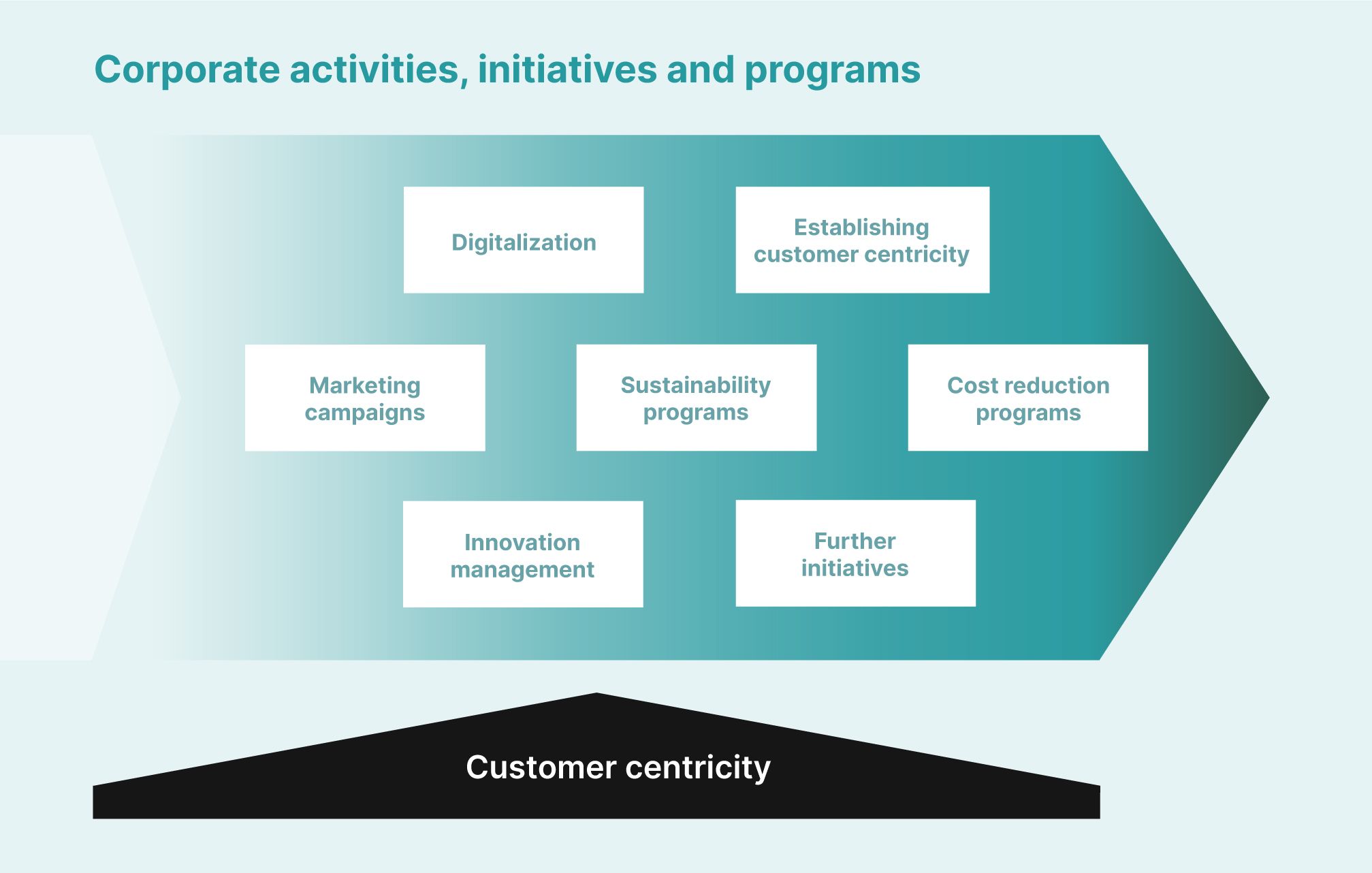
Customer centricity as a catalyst for success
Customer centricity plays a crucial role in every corporate program and initiative, whether it be in the areas of digitalization, innovation, marketing, or cost reduction.
In a conversation about customer centricity, an insurance manager once remarked: “Well okay, customer centricity was also up for discussion in our company, but we’re initially focusing on digitalization.” The irony of this statement is obvious: even a digitalization project won’t be successful without customer centricity. Customers will only accept digital solutions that bring them some sort of benefit.
This can be taken even further: customer centricity not only has a direct impact on how successful you are with customers, but also involves some indirect effects. Any corporate initiative that directly or indirectly affects the customer will be more successful if it prioritizes customer centricity.

Digitalization isn’t an end in itself
Let’s take digitalization as an example: various initiatives in this area mean that processes in which the customer is involved are further developed in accordance with the latest technology, but this also applies to internal processes. If these initiatives then focus solely on internal aspects such as improving efficiency, it’s unlikely that the solutions that are developed will improve the customer relationship: on the contrary, there’s a danger that they might even harm it. If digitalization projects aren’t aligned with customers’ requirements, they can undermine corporate success in the medium term.
Innovations can only be successful if they address customers’ needs
Eine weitere Herausforderung von Unternehmen besteht darin, erfolgreiche Innovationen zu entwickeln. Häufig beobachten wir Innovationen, die ein «Hauptsache, was Neues gemacht» versprühen oder eine reine Nachahmung der Konkurrenz darstellen. Dagegen existieren in zahlreichen Branchen echte Kundenbedürfnisse, welche die Grundlage für erfolgreiche Innovationen sein könnten. Um diese Potenziale zu heben, bedarf es einer kundenzentrierten Organisation, die sich in die Kunden hineinversetzen und ihre Bedürfnisse erkennen kann.
Marketing that aims to support customers rather than exploit them or take them for fools
Marketing activities are often:
- easy to see through if they’re all about dangling a carrot in front of the customer’s nose
- unimaginative, like (for example) the widespread discount coupons that are found in e-commerce
- irrelevant for the customer if (for example) they promote product features that offer no benefit
- empty promises where even sales and service staff wonder how these promises are supposed to be kept – where brand image and experience don’t coincide
- disingenuous if measures to increase loyalty actually require one-sided loyalty on the part of customers
By contrast, customer-centered marketing initiatives address customers’ requirements. There are some positive examples of this when:
- customers are offered products and services that will actually benefit them instead of ones that simply need to be “shifted
- customer loyalty is rewarded, and not only for new customers
- they convey a purpose to the customer
Cost reduction and customer centricity aren’t incompatible – on the contrary!
Last but not least: even when it comes to cost reduction programs, the customer’s perspective mustn’t be ignored. This isn’t intuitive. There’s a widely held view that a customer orientation must be associated with higher costs. However, customer-centric companies try to save costs precisely where this is least likely to antagonize customers, so they ask: where would our customers start if savings had to be made? Obviously this can force managers and employees to change some of their longstanding habits.
Establishing customer centricity
Some companies or business leaders may well have customer centricity in their blood if (for example) they’re able to spontaneously come up with customer-centered innovations, but usually it’s necessary to deliberately structure the organization to make it customer-centered. This means that corporate activities and programs are above all successful if they’re accompanied by a consistent shift towards greater customer centricity within the organization.



